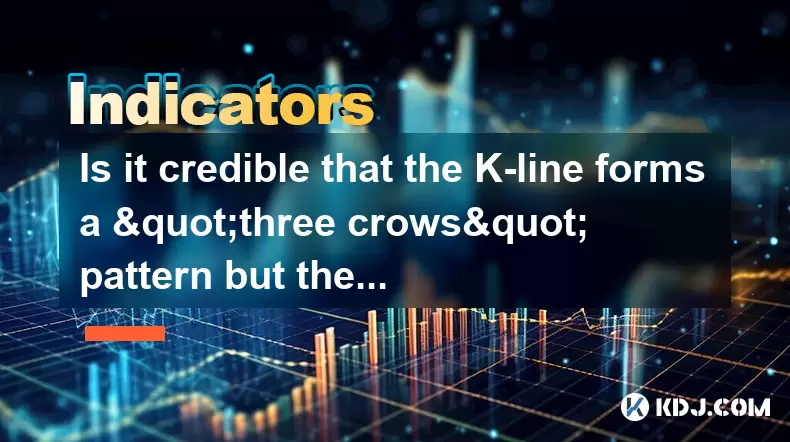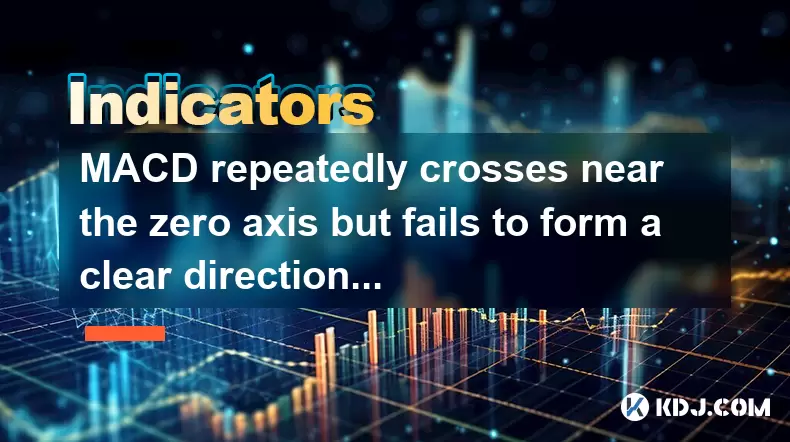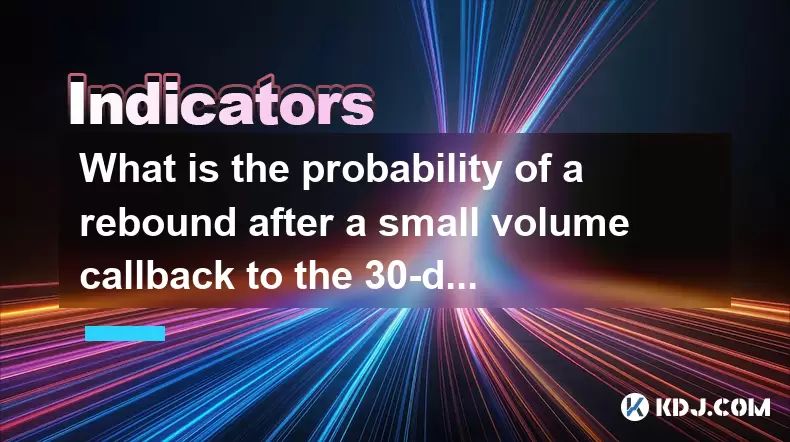-
 Bitcoin
Bitcoin $105,278.9859
4.61% -
 Ethereum
Ethereum $2,414.7741
8.20% -
 Tether USDt
Tether USDt $1.0007
0.05% -
 XRP
XRP $2.1600
7.53% -
 BNB
BNB $639.5433
3.75% -
 Solana
Solana $144.3830
9.37% -
 USDC
USDC $1.0001
0.02% -
 TRON
TRON $0.2742
3.84% -
 Dogecoin
Dogecoin $0.1640
8.57% -
 Cardano
Cardano $0.5811
7.49% -
 Hyperliquid
Hyperliquid $37.2466
5.28% -
 Sui
Sui $2.8243
14.84% -
 Bitcoin Cash
Bitcoin Cash $460.8816
2.22% -
 Chainlink
Chainlink $12.9580
11.75% -
 UNUS SED LEO
UNUS SED LEO $9.1359
1.23% -
 Avalanche
Avalanche $18.2302
10.30% -
 Stellar
Stellar $0.2463
7.80% -
 Toncoin
Toncoin $2.9151
7.18% -
 Shiba Inu
Shiba Inu $0.0...01163
9.79% -
 Hedera
Hedera $0.1532
14.01% -
 Litecoin
Litecoin $85.3310
6.29% -
 Monero
Monero $308.8215
2.90% -
 Ethena USDe
Ethena USDe $1.0007
0.03% -
 Polkadot
Polkadot $3.4259
9.42% -
 Dai
Dai $1.0002
0.01% -
 Bitget Token
Bitget Token $4.1742
3.19% -
 Uniswap
Uniswap $6.8272
8.53% -
 Pepe
Pepe $0.0...09939
12.29% -
 Pi
Pi $0.5358
6.03% -
 Aave
Aave $257.3092
12.83%
Is it credible that the K-line forms a "three crows" pattern but the trading volume decreases?
The three crows pattern signals a potential bearish reversal in crypto, but low volume can weaken its reliability, requiring confirmation from other indicators or market context.
Jun 24, 2025 at 05:56 am

Understanding the "Three Crows" Pattern in Cryptocurrency Trading
The three crows pattern is a well-known bearish reversal signal in technical analysis, often observed when an uptrend transitions into a potential downtrend. This formation consists of three consecutive long red (or bearish) candles with each opening within the body of the previous candle and closing lower than the prior session. Traders frequently rely on this chart pattern to anticipate market reversals.
In the cryptocurrency market, where volatility is high and sentiment shifts rapidly, recognizing such patterns can be crucial for timing entries and exits. However, it's important to understand that not all occurrences of the three crows pattern are reliable indicators of a trend reversal, especially when other supporting factors like volume contradict the expected behavior.
Important Note:
The three crows pattern is most effective when confirmed by additional technical indicators or volume changes that align with the bearish signal.The Role of Volume in Confirming Candlestick Patterns
Volume plays a critical role in validating any candlestick pattern. Typically, when a bearish reversal pattern like the three crows appears, traders expect to see increasing volume during the formation. This increase would suggest strong selling pressure reinforcing the downward movement.
However, there are scenarios where the three crows pattern forms while volume is decreasing. This divergence raises questions about the strength of the bearish move. A drop in volume could imply that sellers are not aggressively pushing prices down, which may weaken the reliability of the pattern as a reversal signal.
- Volume confirms trend strength: High volume during pattern formation suggests strong participation.
- Low volume contradicts typical expectations: A bearish pattern with shrinking volume might indicate hesitation rather than conviction among sellers.
Why Volume May Decrease During a Three Crows Formation
There are several possible explanations for why volume might decline during a three crows pattern:
- Profit-taking: Early sellers may have already exited their positions, reducing the number of active traders participating in the decline.
- Market indecision: A lack of aggressive buying or selling activity indicates that the market is uncertain about the next direction.
- Whale manipulation: Large holders may be subtly moving the price without triggering panic or excitement, keeping volume artificially low.
In crypto markets, where liquidity can vary significantly between assets, a decrease in volume doesn't always mean the reversal is false — but it does warrant caution.
How to Analyze the Three Crows Pattern with Low Volume
To assess whether the three crows pattern is credible under low volume conditions, follow these steps:
- Identify support and resistance levels: If the pattern forms near a key resistance level, the bearish signal becomes stronger even with low volume.
- Check for overbought conditions: Use tools like RSI or MACD to confirm if the asset was previously overbought, making a correction more likely.
- Look at longer timeframes: A three crows pattern on a 1-hour chart may be less significant than one forming on a daily or weekly chart.
- Observe post-pattern behavior: Wait for confirmation after the pattern completes — a breakdown below the lowest close of the three candles adds credibility.
It's essential to avoid acting solely on the three crows pattern without confirming signals from other tools or market behaviors.
Case Studies: Real-World Examples in Crypto Markets
Let’s look at two hypothetical scenarios involving Bitcoin and Ethereum:
- Bitcoin in early 2023: A three crows pattern formed with declining volume, yet prices continued sideways for weeks before resuming the uptrend. This example shows how low volume can lead to false signals.
- Ethereum in late 2022: A similar pattern emerged with decreasing volume, but it coincided with a broader market sell-off. In this case, the pattern proved accurate despite the low volume due to external macro factors.
These examples illustrate that context matters. Always evaluate the broader market environment before relying solely on candlestick patterns.
Frequently Asked Questions
Can the three crows pattern still be trusted if volume increases after the pattern completes?
Yes, if volume surges immediately after the completion of the three crows pattern, especially with a sharp drop in price, it can validate the bearish reversal. This delayed spike in volume might indicate late confirmation of seller dominance.
What should I do if I spot a three crows pattern with low volume?
Avoid immediate action. Instead, wait for further confirmation through a breakdown of key support levels or increased momentum on subsequent candles. Consider using stop-loss orders to manage risk.
Is the three crows pattern more reliable in certain cryptocurrencies?
This pattern works best in highly liquid and actively traded pairs like BTC/USDT or ETH/USDT. Less liquid altcoins may produce misleading signals due to erratic price movements and thin order books.
Does the three crows pattern work better in bull or bear markets?
In bear markets, the three crows pattern tends to be more reliable since the general sentiment aligns with its bearish nature. In bull markets, it often fails unless accompanied by strong fundamentals or news-driven sell-offs.
Disclaimer:info@kdj.com
The information provided is not trading advice. kdj.com does not assume any responsibility for any investments made based on the information provided in this article. Cryptocurrencies are highly volatile and it is highly recommended that you invest with caution after thorough research!
If you believe that the content used on this website infringes your copyright, please contact us immediately (info@kdj.com) and we will delete it promptly.
- Texas, Bitcoin, and the Reserve: How the Lone Star State is Pioneering Crypto Adoption
- 2025-06-24 10:45:12
- DOGE Rally: Bullish Surge or Last Shakeout?
- 2025-06-24 10:25:13
- Solaxy's Uniswap Debut: A New Crypto Listing Shaking Up the Market
- 2025-06-24 10:25:13
- Coinbase, Tokenized Trading, and the US Senate: A New Era for Crypto?
- 2025-06-24 10:45:12
- Bitcoin, Crypto Signals, and Hyperliquid: What's the Hype?
- 2025-06-24 11:05:12
- Fadillah's Uzbekistan Mission: Sparking Cooperation in Energy, Tourism, and Education
- 2025-06-24 11:05:12
Related knowledge

How to operate when the weekly MACD red column is continuously shortened but the daily golden cross is formed?
Jun 24,2025 at 10:28am
Understanding the Weekly MACD Red Column ShorteningWhen analyzing cryptocurrency markets, technical indicators such as the Moving Average Convergence Divergence (MACD) are essential tools for traders. The weekly MACD red column shortening indicates a weakening of the bearish momentum over the past week. This means that while the market is still in a dow...

What does the continuous rise of the ADX line of the DMI indicator in the downward trend indicate?
Jun 24,2025 at 05:00am
Understanding the DMI Indicator and Its ComponentsThe Directional Movement Index (DMI) is a technical analysis tool that helps traders identify the strength and direction of a trend. It consists of two primary components: the +DI (Positive Directional Indicator) and the -DI (Negative Directional Indicator). The ADX line, which stands for Average Directi...

MACD repeatedly crosses near the zero axis but fails to form a clear direction?
Jun 24,2025 at 09:28am
Understanding MACD Behavior Around the Zero AxisThe Moving Average Convergence Divergence (MACD) is a widely used technical indicator in cryptocurrency trading. It consists of three main components: the MACD line, the signal line, and the histogram. When the MACD line crosses above or below the signal line, it generates buy or sell signals. However, whe...

What is the probability of a rebound after a small volume callback to the 30-day moving average to get support?
Jun 24,2025 at 05:08am
Understanding the 30-Day Moving Average in Cryptocurrency TradingIn cryptocurrency trading, the 30-day moving average (MA) is a widely used technical indicator that helps traders identify potential support and resistance levels. It calculates the average closing price of an asset over the last 30 days, smoothing out short-term volatility and providing a...

How to interpret that the time-sharing chart shows "volume and price rise together" but the MACD red column shortens?
Jun 24,2025 at 01:08am
Understanding the Concept of 'Volume and Price Rise Together'In cryptocurrency trading, when a time-sharing chart shows that both volume and price rise together, it is typically interpreted as a sign of strong buying pressure. This means more traders are entering long positions, pushing the price higher while increasing the trading volume. This phenomen...

Is it contradictory that the moving average system is arranged in a bullish pattern but the DMI shows a decline in trend strength?
Jun 23,2025 at 11:43pm
Understanding the Moving Average and DMI RelationshipIn cryptocurrency trading, technical analysis plays a crucial role in identifying potential trends and making informed decisions. Two of the most commonly used indicators are the Moving Average (MA) and the Directional Movement Index (DMI). While both tools aim to provide insight into market direction...

How to operate when the weekly MACD red column is continuously shortened but the daily golden cross is formed?
Jun 24,2025 at 10:28am
Understanding the Weekly MACD Red Column ShorteningWhen analyzing cryptocurrency markets, technical indicators such as the Moving Average Convergence Divergence (MACD) are essential tools for traders. The weekly MACD red column shortening indicates a weakening of the bearish momentum over the past week. This means that while the market is still in a dow...

What does the continuous rise of the ADX line of the DMI indicator in the downward trend indicate?
Jun 24,2025 at 05:00am
Understanding the DMI Indicator and Its ComponentsThe Directional Movement Index (DMI) is a technical analysis tool that helps traders identify the strength and direction of a trend. It consists of two primary components: the +DI (Positive Directional Indicator) and the -DI (Negative Directional Indicator). The ADX line, which stands for Average Directi...

MACD repeatedly crosses near the zero axis but fails to form a clear direction?
Jun 24,2025 at 09:28am
Understanding MACD Behavior Around the Zero AxisThe Moving Average Convergence Divergence (MACD) is a widely used technical indicator in cryptocurrency trading. It consists of three main components: the MACD line, the signal line, and the histogram. When the MACD line crosses above or below the signal line, it generates buy or sell signals. However, whe...

What is the probability of a rebound after a small volume callback to the 30-day moving average to get support?
Jun 24,2025 at 05:08am
Understanding the 30-Day Moving Average in Cryptocurrency TradingIn cryptocurrency trading, the 30-day moving average (MA) is a widely used technical indicator that helps traders identify potential support and resistance levels. It calculates the average closing price of an asset over the last 30 days, smoothing out short-term volatility and providing a...

How to interpret that the time-sharing chart shows "volume and price rise together" but the MACD red column shortens?
Jun 24,2025 at 01:08am
Understanding the Concept of 'Volume and Price Rise Together'In cryptocurrency trading, when a time-sharing chart shows that both volume and price rise together, it is typically interpreted as a sign of strong buying pressure. This means more traders are entering long positions, pushing the price higher while increasing the trading volume. This phenomen...

Is it contradictory that the moving average system is arranged in a bullish pattern but the DMI shows a decline in trend strength?
Jun 23,2025 at 11:43pm
Understanding the Moving Average and DMI RelationshipIn cryptocurrency trading, technical analysis plays a crucial role in identifying potential trends and making informed decisions. Two of the most commonly used indicators are the Moving Average (MA) and the Directional Movement Index (DMI). While both tools aim to provide insight into market direction...
See all articles
























































































